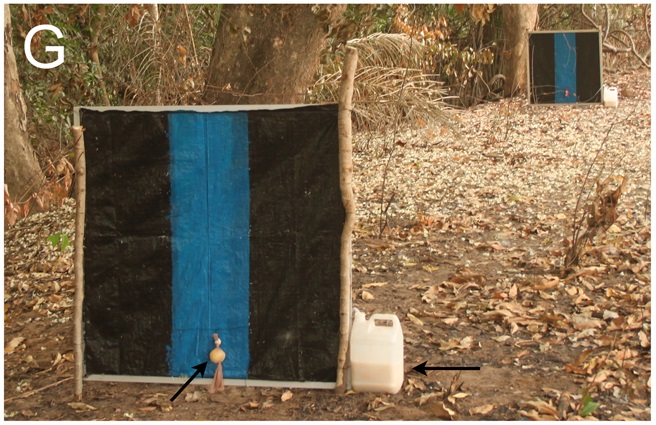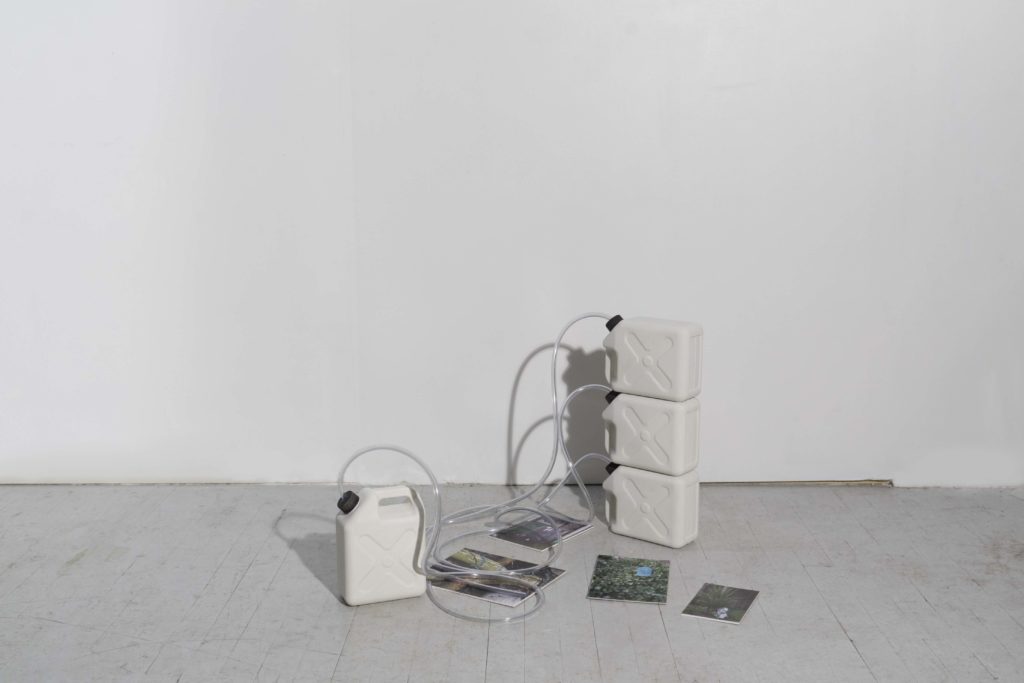While I was growing up in Korea, my dad sometimes took our family to a small town in the eastern mountains to buy some quality matsutake mushrooms in the fall. The mushroom flesh was thinly sliced and gently heated on a pan layered with pine needles. It tasted like a pine forest. I would hold the scent in my nose long after the mushrooms had slid down my esophagus. I am now several years and more than 8,000 kilometres away from the memory of those family trips, but I can still smell the matsutake mushrooms between my teeth. The smell touches the edge of my nasal cavity. When I try to grab the scent by pulling air through my nostrils, the memory sways back.
The olfactory bulb, where sensory information from the nose is collected, forms part of the limbic system, the part of the brain that regulates, among other functions, emotion and memory. The human physiology of smell is tangled with memories and emotions. Recalling a smell necessarily triggers its attached memories. My nose is in the past: I miss the nauseating car ride along the cliffs; I miss the deepest blue of the October sky; I miss the place where all four members of my family once ate together. As the ghost of mushroom scent disperses, my memory of home also recedes into the past.
The mushroom scent has a name: 1-octen-3-ol. In the culinary world, it is known as mushroom alcohol or matsutake alcohol. The raw matsutake mushroom flavour is a combination of at least eight different volatile organic compounds.[1] (Volatile organic compounds have low boiling points, close to room temperature, a trait that allows their molecules to easily turn into gas from solid or liquid states. Most odour molecules are volatile.) But 1-octen-3-ol alone is usually enough to convince our taste buds and olfactory receptors of the essence of matsutake mushroom.
What to do with a sensation without a reference?
What information do I gain from a smell that cannot be described in words?
When properly diluted and applied to a perfume test strip, 1-octen-3-ol smells like fingernails splitting a raw mushroom. I press my thumbs into the belly of a mushroom, and it lets out the breath it has been holding. I smell its dampness, perhaps similar to the smell of wetness on raw chicken. This is the smell of 1-octen-3-ol.
My discomfort with naming an odour molecule is that a technical name such as 1-octen-3-ol detaches my feelings and memories from the object and attempts to reattach them to a molecule made up of carbon, hydrogen and oxygen. I used to think smell was an intrinsic property. I now think smell is composed of the memories we attribute to volatile organic compounds. The metallic smell of a coin in your sweaty hands is a good example. Metal atoms are tightly packed; there are no loose iron molecules in the air reaching the olfactory receptors in your nose. Instead, the smell we associate with metal is the smell of 1-octen-3-one, a metallic mushroom-smelling cousin of matsutake alcohol, produced when certain oils from our fingers react to a metal.[2] It is not the metal’s property. It comes from the skin. “When a shopkeeper hands you a coin…you are smelling his body odour.”[3]
1-Octen-3-ol is the mushroom-like note of Camembert cheese. It is in the grey wolf’s anal-sac secretions to communicate their sex and hormonal state.[4] Millipedes emit 1-octen-3-ol, along with other compounds, possibly as an alarm pheromone.[5] It is also produced by a variety of fungi, plants and animals. Humans breathe out and sweat 1-octen-3-ol. In fact, 1-octen-3-ol, in combination with carbon dioxide, is a potent mosquito lure[6]—the compound is a key indicator of human presence.
I compare how I sense 1-octen-3-ol through my memories of matsutake mushrooms and how I am known through 1-octen-3-ol by other beings. On one hand, smell is a memory. I know each smell through lived experience. On the other hand, smell is a chemical compound that triggers reactions in other organisms. Each odorant compound testifies to the unique biology of its maker. Different shapes of carbon chains act as distinct chemical messages in the air. These two ways of sensing and knowing 1-octen-3-ol meet like the land and the sky creating a horizon. As a human and an artist, I understand my relationship to other people, organisms and the land through what is seen. But I am learning about a dense web of relationships that are unseen. Perhaps a more ecological consciousness can develop in an expanded field of visual art. My entry into the field of olfactory relationships was to learn how others perceive me. With my nose that smells mushroom from the presence of 1-octen- 3-ol, I wanted to learn what it is to sense/know a human body by the chemical markers it emits.
An important scientific article I came across in my research was “Identification of Human Semiochemicals Attractive to the Major Vectors of Onchocerciasis,” from a study led by Ryan M. Young.[7] The study acknowledges the common scientific practice of using human volunteers as lures to collect the species of blackfly (Simulium damnosum s.l. and Simulium ochraceum s.l.) that spread the parasite causing onchocerciasis, also known as “river blindness,” a public health issue in much of Africa, as well as in Venezuela, Brazil and Yemen. As the World Health Organization and various other groups implement disease- elimination programs, researchers must collect blackflies to verify the declining population of the parasite. There are, however, obvious ethical and safety issues with the “human landing” method. In order to create a safer way to collect blackflies, the study analyzed human sweat and breath samples to identify the volatile organic compounds produced by a human body. They then ran tests on blackflies to determine the optimal mixture of chemicals to attract the insects.
The Esperanza Window Trap (EWT) is a simple design developed to replace the human-landing method of blackfly collection for monitoring onchocerciasis transmission.[8] Early designs usually consisted of a container holding water, yeast and sugar (which ferments and produces carbon dioxide); a mosquito lure or a worn T-shirt containing human secretions (sweat); and coloured netting stretched over a wood frame. The chemical lure developed by the Young et al. team is an improvement on design, accounting for the unquantifiable nature of a worn T-shirt’s chemical attributes and the problem of using a mosquito lure to attract blackflies. Instead of a worn T-shirt, the study used nylon stockings containing beads infused with a chemical lure. Although the trap looks nothing like a person, this makeshift lung “exhales” carbon dioxide similarly to how our lungs push air through our windpipes. It also mimics the human bodily functions of sweating and breathing by emitting telltale chemical attractors. It portrays the human body chemically.
 Esperanza Window Traps installed in Bodajugu, Burkina Faso. Photo Ryan M. Young et al. (See Note 7) Used under CC by 4.0. Cropped from original.
Esperanza Window Traps installed in Bodajugu, Burkina Faso. Photo Ryan M. Young et al. (See Note 7) Used under CC by 4.0. Cropped from original.
The verbs “see” and “hear” lovingly connect “I” and “you” through a relationship of perception. My guess is that there is no affirming way of saying, “I smell you.”
When I compare the EWT to research photos of human-lure volunteers sitting behind nets, what I see are differences. What blackflies smell are similarities. The research showed that blackflies were attracted to the simulated human body. Through the EWT, I see my chemical image as other beings sense it. I don’t recognize my reflection in it because the trap is not designed for my senses. The window cannot reflect my gaze. Instead, it is designed for the olfactory receptors of insects that seek out our scent. I was curious to experience the chemical portrait of a human body as the flies do. How would it smell to my nose? I set out to build my own trap.
The article by Young et al. identifies 56 volatile chemical compounds in human sweat and breath. Researchers tested what blackflies prefer and narrowed it down to two chemical mixtures that mimicked human odour; the first of these mixtures comprised 1-octen-3-ol, 1-octanol, acetophenone, hexanal and ammonium bicarbonate. Before I proceeded to mix them together myself, I wanted to learn what each ingredient smells like. Putting my nose to scents that were not associated with any clear material experience was disorienting. My brain did not know how to process the information. I found myself busy looking for a memory to anchor the smell. Acetophenone smells like the adhesive on clear tape. I can almost hear the cheeeet sound of pulling on a tape roll. It also smells like almond extract or marzipan (but very synthetic). Hexanal smells like the first note of freshly cut grass, the smell that makes me see yellowish-green before the metallic endnote. Ammonium bicarbonate just smells like ammonia—I am immediately reminded of fermented skate fish or a stained urinal. It hits the back of my throat, not metaphorically.
When I combined all of them, I did not know what I smelled. I expected the chemical mixture to resemble what I know as the smell of a body. I know the smell of my wife J’s T-shirt. Its cotton fibres absorb the soft, leather-like smell of her skin. But the simulated human odour was different. I tried to compare it to something I remembered. Have I smelled something similar? I tried to find words to describe it, comparing the smell to a visual description, a sound and a taste. There were none. What I experienced from the chemical mixture was a sensation: organic compounds causing chemical reactions in my nasal cavity, sending electrical signals to my brain.
What to do with a sensation without a reference? What information do I gain from a smell that cannot be described in words? Yet that seems similar to how blackflies sense a human body. Each ingredient of the chemical lure causes chemical reactions in the insect’s antenna and stimulates the brain. This neuro-stimulation triggers host-seeking behaviour. They don’t have to look for words to describe the smell. The smell is already a message. For me, smell is an adjective. The smell of J’s T-shirt describes how I remember her. But when I frame scent as a noun, I have no verbs or adjectives to complete the sentence.
 Woojae Kim, Esperanza Window Trap, 2020. Human semiochemicals, plastic containers painted with clay and bitumen, and ink-jet prints.
Woojae Kim, Esperanza Window Trap, 2020. Human semiochemicals, plastic containers painted with clay and bitumen, and ink-jet prints.
The word “unseen” points to an area beyond the horizon. By naming the lack of experience, we acknowledge it. The word points to the boundary between seen and unseen, and says, “There is something there.” “Unheard,” “unknown” and “untouched” do the same. But what about “unsmelled”? It’s not in my dictionary. What language do I use to point to what exists beyond our ability to smell? When smelling what blood-feeding insects sense of our body, I am in the territory of the unsmelled. The name researchers give to these chemicals that allow communication between beings is “semiochemical.” As the name suggests, odorous compounds are a language, chemical signals agreed upon through a long history of organisms evolving together. The study by Young et al. is one attempt to learn about the human body through the language of blackflies. And the result is an encrypted message to which I do not have the key.
In English, people often say, “I see you” or “I hear you.” These phrases make the listener feel acknowledged and understood. Of course, seeing, here, is not merely visual: it reports that the speaker has received the message the listener intended to send. The verbs “see” and “hear” lovingly connect “I” and “you” through a relationship of perception. My guess is that there is no affirming way of saying, “I smell you,” because there is no expectation to exchange information through smell. We do not recognize each other’s presence through smell. But in the territory of the unsmelled, we are known by the chemical products of our bodily functions—the processes of living. We are in a relationship of sensing.
In the same way that I can never know what it is like to be a bat, I will never know what it is like to “smell” the air as organisms that sense us chemically do.[9] Instead, as a person curious about semiochemicals, I start by acknowledging the limitations of my biology. This is not to tell you about what we fail to smell, but to point to the lack of language and references to articulate that experience. I think acknowledging this lack nudges us toward a tender sensitivity to nonhuman intelligence. When I smell an orchid flower, I always remember the fragrant orchid I adopted during my military service. I was not allowed to have anything, so I kept the orchid in the storage room and watered it on weekends. It was gratifying to tend to something when I was being abused by many. When my orchid bloomed, I spent time with its fragrance in the neglected storage room in a rundown military building. I was sad that I was the only one who came to smell its flowers. But maybe some insects did too. Some species of orchids release methyl eugenol, raspberry ketone and zingerone, which attract fruit flies.[10] Through a long history of coevolution, fruit flies learned to recognize fragrant orchids through their chemical presence, and orchids learned to invite fruit flies through their smell. Long before I attached my feelings and memories to the soft-smelling mixture of volatile compounds, they were already talking in their sweet fragrance.
1. In Hee Cho et al., “Characterization of Aroma-Active Compounds in Raw and Cooked Pine-Mushrooms (Tricholoma matsutake Sing.),” Journal of Agricultural and Food Chemistry 54, no. 17 (2006): 6332–35.
2. Dietmar Glindemann et al., “The Two Odors of Iron when Touched or Pickled: (Skin) Carbonyl Compounds and Organophosphines,” Angewandte Chemie International Edition 45, no. 42 (2006): 7006–9.
3. Dietmar Glindemann in Philip Ball, “A ‘Metallic’ Smell Is Just Body Odour,” Nature News (October 25, 2006).
4. J. Raymer et al., “Chemical Investigations of Wolf (Canis lupus) Anal-Sac Secretion in Relation to Breeding Season,” Journal of Chemical Ecology 11, no. 5 (1985): 593–608.
5. Yasumasa Kuwahara et al., “Chemical Polymorphism in Defense Secretions during Ontogenetic Development of the Millipede Niponia nodulosa,” Journal of Chemical Ecology 41, no. 1 (2015): 15–21.
6. D.L. Kline, J.R. Wood and J.A. Cornell, “Interactive Effects of l-Octen-3-ol and Carbon Dioxide on Mosquito (Diptera: Culicidae) Surveillance and Control,” Journal of Medical Entomology 28, no. 2 (1991): 254–58.
7. Ryan M. Young et al., “Identification of Human Semiochemicals Attractive to the Major Vectors of Onchocerciasis,” PLoS Neglected Tropical Diseases 9, no. 1 (2015).
8. Mario A. Rodríguez-Pérez et al., “Development of a Novel Trap for the Collection of Black Flies of the Simulium ochraceum Complex,” PLoS ONE 8, no. 10 (2013).
9. Thomas Nagel, “What Is It Like to Be a Bat?,” The Philosophical Review 83, no. 4 (1974): 435–50.
10. Keng Hong Tan and Ritsuo Nishida, “Zingerone in the Floral Synomone of Bulbophyllum baileyi (Orchidaceae) Attracts Bactrocera Fruit Flies during Pollination,” Biochemical Systematics and Ecology 35, no. 6 (2007): 334–41.

 Woojae Kim, Esperanza Window Trap, 2020. Human semiochemicals, plastic containers painted with clay and bitumen, and ink-jet prints.
Woojae Kim, Esperanza Window Trap, 2020. Human semiochemicals, plastic containers painted with clay and bitumen, and ink-jet prints.






